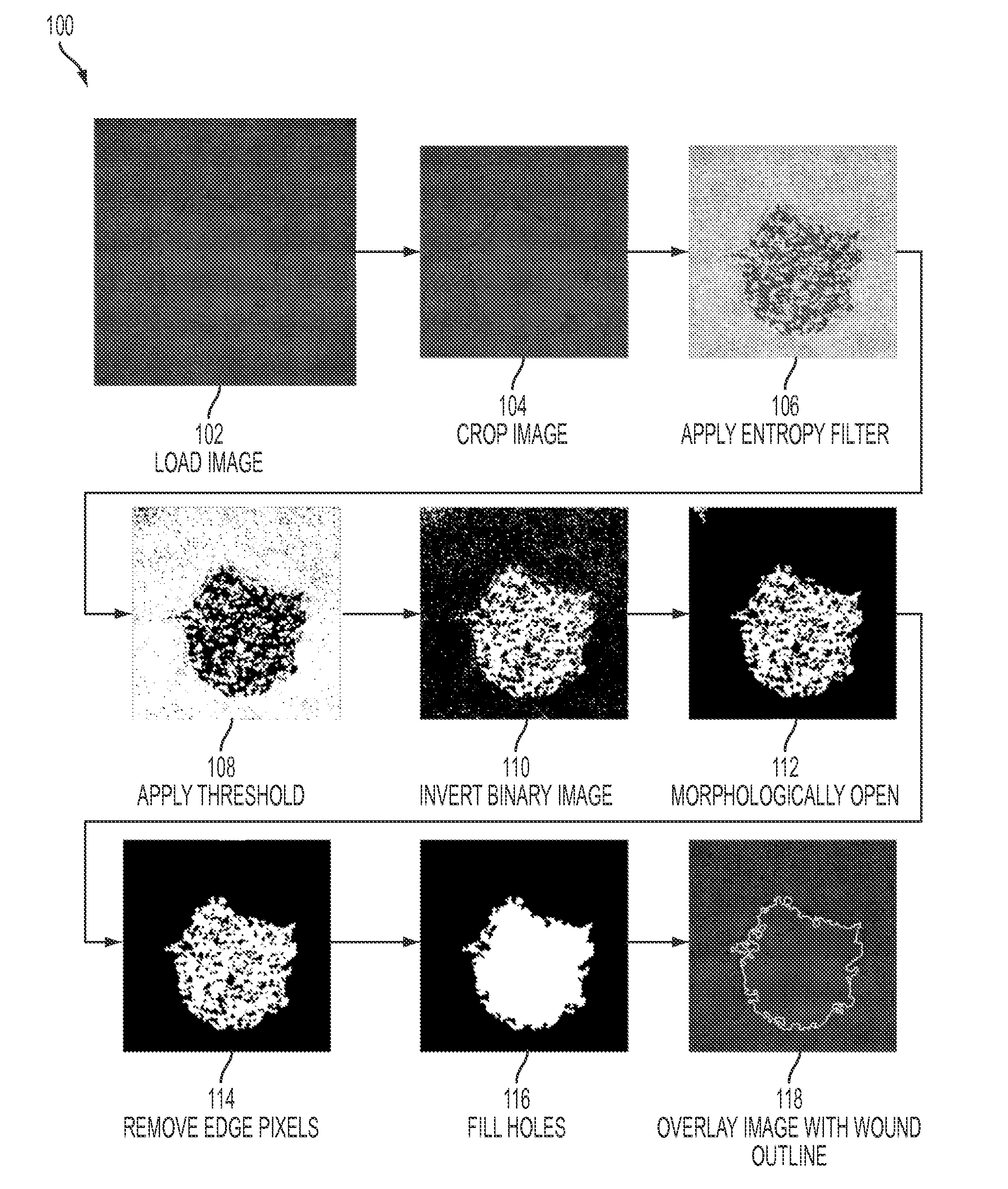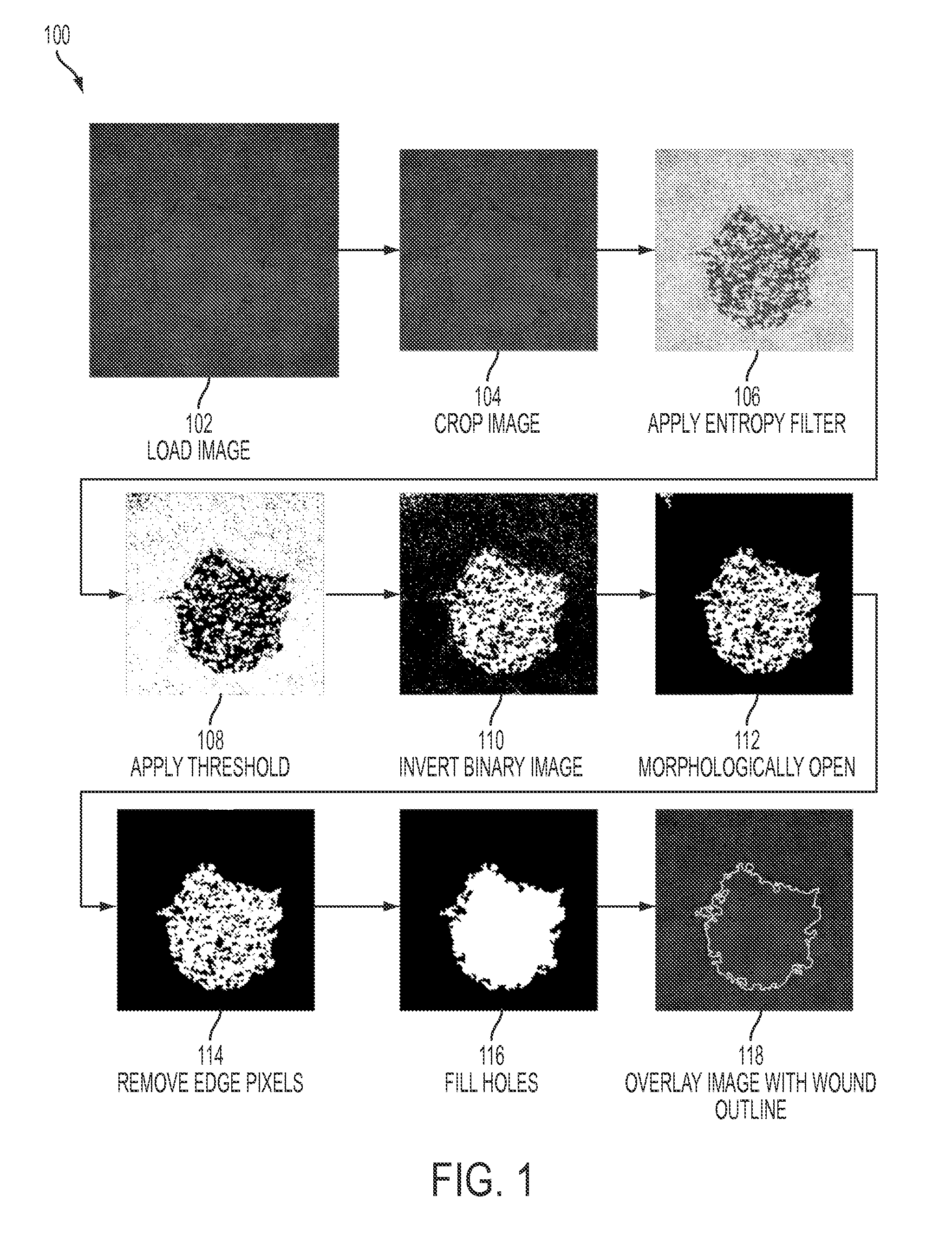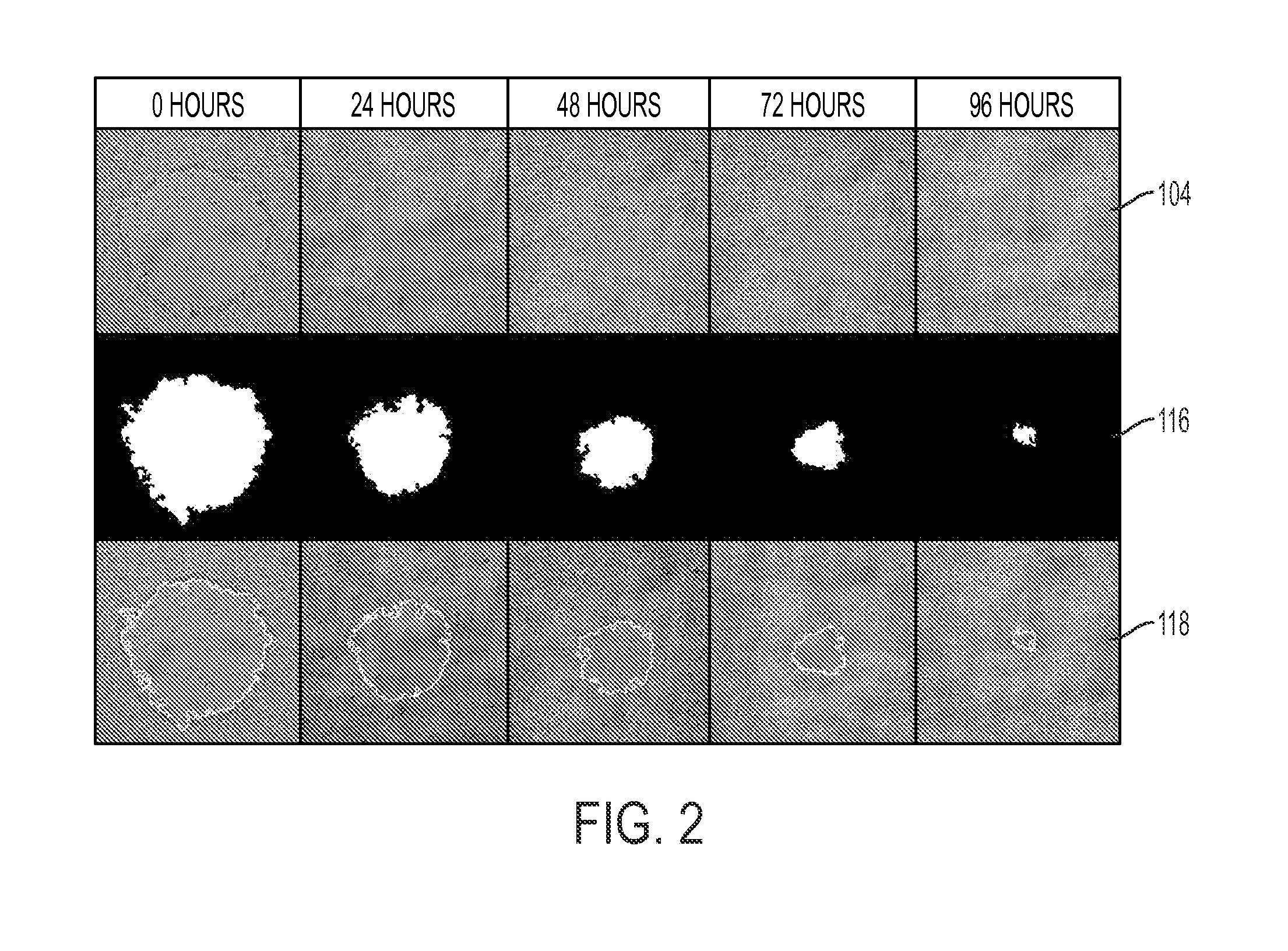Quantitative image analysis for wound healing assay
a quantitative image analysis and assay technology, applied in image enhancement, instruments, healthcare informatics, etc., can solve the problems of manual and tedious methods, the analysis of these wound images has proved to be problematic, and the quantitative data analysis is not tru
- Summary
- Abstract
- Description
- Claims
- Application Information
AI Technical Summary
Benefits of technology
Problems solved by technology
Method used
Image
Examples
Embodiment Construction
[0011]The present application discloses one or more of the features recited in the appended claims and / or the following features, alone or in any combination.
[0012]According to one aspect, a method comprises applying a texture filter to a bright field image of a wound healing assay, generating a wound mask image in response to an output of the texture filter, and determining a wound area of the wound healing assay by counting a number of pixels in the wound mask image corresponding to the wound area.
[0013]In some embodiments, applying the texture filter may comprise applying an entropy filter to the bright field image of the wound healing assay. In other embodiments, applying the texture filter may comprise applying a range filter to the bright field image of the wound healing assay. In still other embodiments, applying the texture filter may comprise applying a standard deviation filter to the bright field image of the wound healing assay. One or more parameters of the texture filt...
PUM
 Login to View More
Login to View More Abstract
Description
Claims
Application Information
 Login to View More
Login to View More - R&D
- Intellectual Property
- Life Sciences
- Materials
- Tech Scout
- Unparalleled Data Quality
- Higher Quality Content
- 60% Fewer Hallucinations
Browse by: Latest US Patents, China's latest patents, Technical Efficacy Thesaurus, Application Domain, Technology Topic, Popular Technical Reports.
© 2025 PatSnap. All rights reserved.Legal|Privacy policy|Modern Slavery Act Transparency Statement|Sitemap|About US| Contact US: help@patsnap.com



